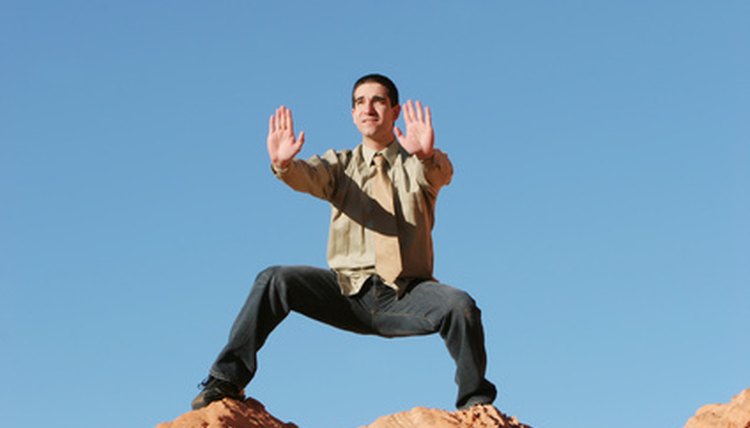What does fact checked mean?
At SportsRec, we strive to deliver objective content that is accurate and up-to-date. Our team periodically reviews articles in order to ensure content quality. The sources cited below consist of evidence from peer-reviewed journals, prominent medical organizations, academic associations, and government data.
The information contained on this site is for informational purposes only, and should not be used as a substitute for the advice of a professional health care provider. Please check with the appropriate physician regarding health questions and concerns. Although we strive to deliver accurate and up-to-date information, no guarantee to that effect is made.
Tai Chi & Other Asian Exercises

Most traditional Asian exercises practiced by North Americans are spiritual or combative in origin, and sometimes both. Asian exercises generally incorporate a holistic approach to fitness and spiritual enlightenment, and unlike most exercise traditions in the Western world, tend to focus on the importance of the connection between mind and body. Discover tai chi and other Asian exercises that can improve your health and overall well-being.
Tai Chi
An estimated 2.3 million Americans practice the Chinese martial art and health training exercise known as tai chi. Tai chi is considered by many to be a form of “moving meditation” in which the practitioners move their bodies gently and slowly while focusing on their breathing and awareness of each movement. Developed in ancient China, tai chi was originally used for martial arts training purposes, but later people started practicing it for its holistic health benefits. The exercise incorporates key Chinese traditional health concepts such as the balance of ying and yang and the flow of yi or life force. Tai chi improves muscle strength, flexibility, balance and coordination. Many claim the exercise also improves sleep, reduces pain and stiffness and improves overall wellness.
Yoga
More than 15 million Americans currently practice yoga. Originating in India, yoga refers to a wide range of mental and physical disciplines deeply tied to Buddhist and Hindu spiritual belief and philosophy. Traditional yoga focuses on meditation, mindfulness and achieving oneness with the universe, though the extent to which yoga practitioners incorporate these concepts into their routine depends on their beliefs. Most yoga fitness classes focus on learning new poses called asanas and improving one’s current poses. Yoga is associated with a wide range of health benefits, including improved strength, flexibility, posture, cardiac health and breathing. Many people also practice yoga to reduce stress, improve their level of concentration and feel better overall.
Qigong
Closely related to tai chi, qigong is another Asian practice designed as a form of physical and mental training for martial arts, self-enlightenment, and health. The goal of qigong is to strengthen, cleanse and improve life energy circulation through the use of breathing techniques, meditation and gentle movements. Chinese archaeologists and historians estimate that people have been practicing qigong for nearly 5,000 years. Qigong has had great influence on a number of other Chinese alternative medicine and healing traditions. Qigong’s three main types--meditative, dynamic and static--all differ slightly in their application and objectives. Qigong is often used in alternative and complementary medicine for treating arthritis, back pain, balance issues, stress and hypertension.
References
Writer Bio
Charlie Higgins is journalist, editor and translator based in Buenos Aires, Argentina. He has written for a variety of lifestyle and niche market websites, including International Food Trader, The Olive Oil Times, microDINERO, Sounds and Colours, Connecting Worlds and The Buenos Aires Reader.
